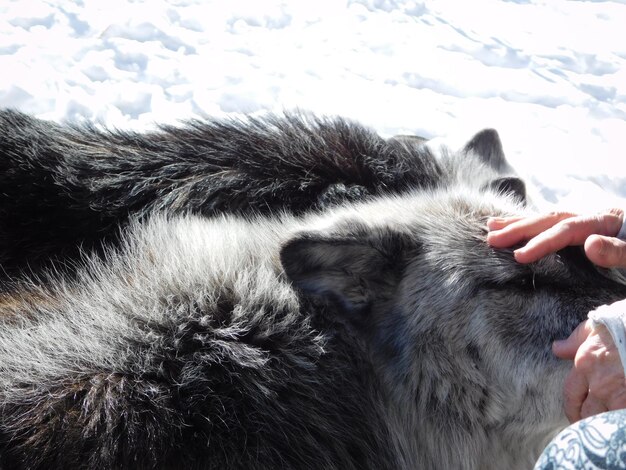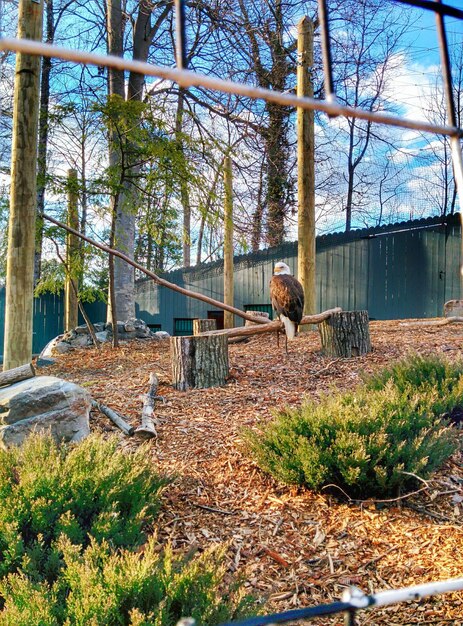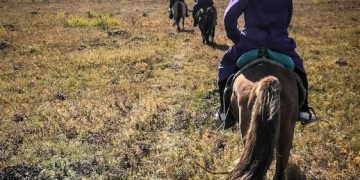Ethical Wildlife Encounters: US Sanctuaries Prioritizing Animal Welfare

Ethical wildlife encounters are possible at sanctuaries prioritizing animal welfare; this article explores three US-based sanctuaries committed to providing safe, enriching environments for rescued animals while promoting responsible tourism and conservation.
Are you passionate about wildlife and eager to support ethical wildlife encounters? Discover how you can make a difference by visiting sanctuaries in the US that prioritize animal welfare, ensuring a safe and enriching environment for rescued animals.
What Defines Ethical Wildlife Encounters?
Ethical wildlife encounters prioritize the well-being of animals over human entertainment. These encounters focus on conservation, rescue, and education, ensuring that animals live in environments that mimic their natural habitats as closely as possible.
Understanding Animal Welfare
Animal welfare centers on an animal’s quality of life, including its physical and mental health. Ethical sanctuaries meet these needs through proper nutrition, veterinary care, and habitats that allow natural behaviors.
Recognizing Unethical Practices
Avoid facilities that offer direct interactions with wild animals, such as riding elephants or posing for photos with tigers. These practices often involve mistreatment and exploitation.
- Avoid interaction: Avoid facilities that allow tourists to directly interact with wild animals
- Say No tours: Say no to tours that sedate animals for easy viewing
- Prioritize Education: Give preference to organizations that focus on rescues and education
Choosing ethical wildlife encounters supports sanctuaries dedicated to animal rehabilitation and conservation. These sanctuaries play a crucial role in protecting endangered species and educating the public.

The Wild Animal Sanctuary, Colorado
Located in Keenesburg, Colorado, The Wild Animal Sanctuary is one of the largest carnivore sanctuaries in the world. This sanctuary rescues and rehabilitates large predators, providing them with a safe haven to live out their lives.
A Mission of Rescue and Rehabilitation
The Wild Animal Sanctuary focuses on rescuing animals from horrific captive situations, including roadside zoos and private ownership. They provide large acreage habitats for the animals to roam.
Unique Sanctuary Features
The sanctuary features elevated walkways that allow visitors to observe animals without disturbing them. This design minimizes stress on the animals and provides a more natural viewing experience.
- Large Habitats: Big enclosures for large animals.
- Educational Programs: Learn about the animals and also their conservation
- Rescue Operations: Every year they do an amazing job rescuing big animals
By visiting The Wild Animal Sanctuary, you are supporting their rescue efforts and helping to provide a better life for these animals. Your visit helps fund their mission of rescue and conservation.
Performing Animal Welfare Society (PAWS), California
PAWS, located in California, operates three sanctuaries dedicated to rescuing and providing lifelong care for captive wildlife. Their commitment extends to advocating for stronger protections for animals in captivity.

Three Sanctuaries, One Mission
PAWS operates three sanctuaries in California: the ARK 2000 sanctuary in San Andreas, and two smaller facilities. Each facility is designed to provide specialized care for its residents.
Advocacy and Education
In addition to their rescue work, PAWS actively advocates for legislation to protect wild animals. They also offer educational programs to raise awareness about the plight of captive wildlife.
- Legislative action: Active involvment for animal protection
- Sanctuary Tours: Visits to the Sanctuary ARK 2000 are possible.
- Rescue and rehabilitation: Permanent homes for wildlife animals.
Supporting PAWS means supporting their tireless efforts to improve animal welfare and promote responsible practices. Their sanctuaries offer a refuge for animals in need and a source of inspiration for visitors.
Black Beauty Ranch, Texas
Located in Murchison, Texas, Black Beauty Ranch, managed by the Humane Society of the United States, provides a safe and natural environment for a diverse range of animals. The ranch is home to over 800 animals, representing more than 40 species.
A Haven for Diverse Species
Black Beauty Ranch offers a home to a wide variety of animals, including primates, big cats, and horses. Each animal receives personalized care and lives in habitats designed to meet their specific needs.
Focus on Natural Habitats
The sanctuary focuses on creating naturalistic habitats that allow animals to express their natural behaviors. This approach reduces stress and promotes overall well-being.
- Wide range of habitats from large to small
- 800 animals: Over 40 species
- HSUS: Is managed by the Humane Society of the United States
Visiting Black Beauty Ranch helps support the Humane Society’s broader mission of animal protection. The ranch offers a glimpse into a world where animals are respected and cherished.
How to Ensure Your Wildlife Encounter is Ethical
Ensuring your wildlife encounter is ethical involves careful planning and consideration, before you even get there. By researching facilities and understanding responsible tourism practices, you can enjoy wildlife encounters that contribute positively to animal welfare and conservation.
Researching Facilities
Before visiting any wildlife facility, conduct thorough research to ensure it aligns with ethical standards. Look for accreditation from reputable organizations of recognized alliances focused on wildlife welfare.
Questionable Activities
Be wary of any facility that offers hands-on interactions with wild animals, such as cub petting or elephant rides. These activities often involve cruel training methods and compromise the animals’ well-being.
- Avoid touching animals: Hands off is the way to go.
- Avoid small enclosures: Habitats should be natural and big
- Prioritize animal well-being: Prioritize animal well-being and natural behavior.
By supporting ethical practices, you contribute to a future where wildlife is respected and protected. Your choices can make a significant impact on the lives of animals around the world.
Supporting Ethical Sanctuaries
There are many ways to support ethical wildlife sanctuaries, even if you cannot visit in person. Your contributions, whether through donations, volunteering, or spreading awareness, can make a significant difference in the lives of rescued animals.
Donations and Sponsorships
Many sanctuaries rely on donations to fund their rescue and rehabilitation efforts. Consider making a one-time donation or sponsoring an animal to provide ongoing support.
Volunteering Your Time
Volunteering at a sanctuary can be a rewarding experience, offering the chance to work directly with animals and contribute to their care and well-being.
- Donate money or time.
- Share on your media
By actively supporting ethical sanctuaries, you become part of a movement to protect wildlife and promote responsible tourism. Your actions can inspire others to make ethical choices and contribute to a more compassionate world.
| Key Point | Brief Description |
|---|---|
| 🐾 Animal Welfare | Prioritize sanctuaries focused on animal rescue and well-being. |
| 🏞️ Natural Habitats | Support facilities that mimic natural environments for animals. |
| 🚫 Avoid Interaction | Say no to tours allowing direct contact with wild animals. |
| 💰 Donations | Contribute to support rescue and conservation efforts. |
FAQ
An ethical wildlife encounter prioritizes the animal’s well-being. It focuses on conservation, education, and providing environments that mimic their natural habitats as closely as possible, without direct interactions.
Avoid facilities that offer hands-on interactions with wild animals like riding, or photo ops. Also, be wary of places where animals seem sedated or live in small, unnatural enclosures.
Supporting ethical sanctuaries helps fund rescue and rehabilitation efforts. It promotes better treatment of animals and encourages conservation efforts, ensuring a more compassionate world.
You can support sanctuaries through donations, sponsoring an animal, volunteering your time, or spreading awareness about their work through social media and word of mouth. Every effort counts!
Look for accreditation from reputable organizations that focus on wildlife welfare. Check reviews and ensure the facility prioritizes animal well-being, rescue, and offers educational programs on conservation.
Conclusion
Choosing to support ethical wildlife encounters at sanctuaries like The Wild Animal Sanctuary, PAWS, and Black Beauty Ranch is a powerful way to advocate for animal welfare and conservation. By prioritizing the needs of animals and promoting responsible tourism, we can help create a world where wildlife thrives.





